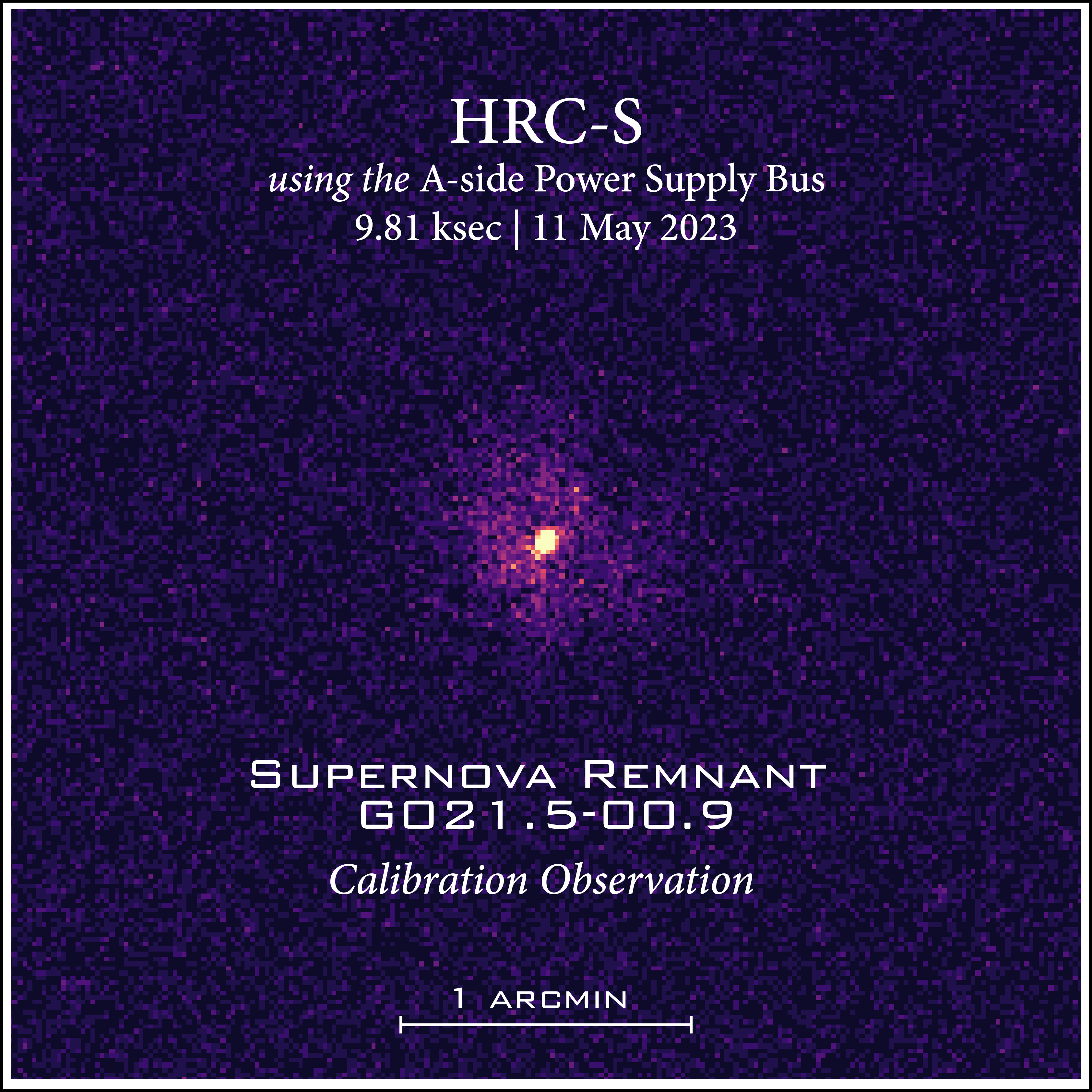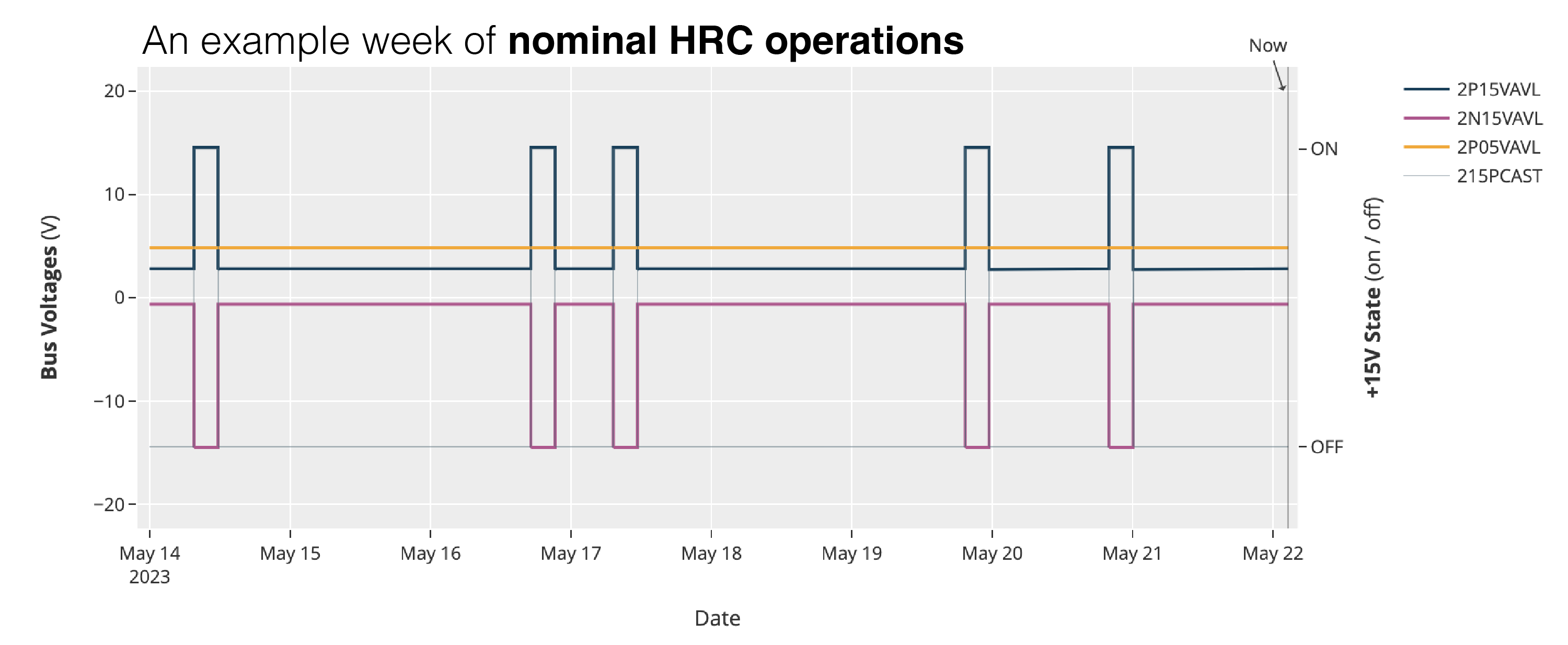HRC Update
Grant Tremblay, Ralph Kraft, Paul Nulsen, Dan Patnaude, Tom Gauron, Almus Kenter, Ken Gage, Brad Bissell, Josh Model, Gerald Austin, Tom Aldcroft, Sabina Hurley, & Megan Lin
As we approach the three-year anniversary of the first two HRC anomalies on A-side electronics, and following a year of intense work recovering from the 2022 B-side anomaly, the HRC Team is delighted to report that the instrument has returned to normal science operations on a newly recovered A-side electronics board. More than twenty successful HRC-I and HRC-S observations have now been completed following our official return-to-science on April 10, 2023, and both instrument performance and science data quality have been nominal. With no known effects as a result of either the A-side anomalies, or the more than two-year A-side shutdown while we were in B-side operations, the HRC is once again fully available to the community to pursue the cutting-edge science that the instrument has long enabled.

Figure 1: SNR G021.5−00.9, a calibration observation with HRC-S taken as part of our new normal science operations mode. All instrument performance and scientific data since return to science have been nominal.
The return to science is thanks to a major joint effort—ongoing since the very first anomaly on August 24, 2020—by the HRC Science and Flight Operations teams, the HRC Anomaly Working Group, and indeed the Chandra team as a whole, including our partners at the Marshall Space Flight Center, Northrop Grumman, and NASA Headquarters. The HRC Anomaly Working Group is close to completing a community report that will present conclusions from an extensive fault tree investigation that spans all encountered anomalies on the A- and B-sides. They have made major progress in understanding the root cause of the anomaly, and their findings have informed planning for the new operational paradigm for the HRC.

Figure 2: An example plot from one of our HRC telemetry monitoring systems developed in the wake of the anomalies. The plot shows five successful HRC observations with nominal performance by the +/− 15 V A-side power supply bus. Our new operations mode for the HRC includes shutting down the 15 V power supply between observations, leaving the instrument powered only by the +5 V supply, keeping the mean temperature of the central electronics assembly between ∼0–10 °C.
While we will leave it to the HRC Anomaly Working Group’s report to present the detailed findings of this years-long analysis, we can share that the main culprit for the A- and B-side anomalies is believed to be contained within the MTR28D15 DC-to-DC converter on both electronics boards, and that there is great reason to believe that keeping the instrument cool can help to prevent the re-occurrence of another anomaly. To that end, the updated operational paradigm for the instrument includes the following new guidelines and constraints, none of which should impact the Chandra user directly:
- All forthcoming HRC observation blocks will have a 15 ksec maximum observing time before the +/− 15 V power supply bus must be shut down, in order to cool the instrument. We reiterate that this does not prevent proposals from requesting and being awarded (much!) more time on the HRC—this only means that individual observing segments created by Mission Planning must be less than 15 ksec.
-
A 30 ksec minimum “off” interval must separate successive 15 ksec blocks of HRC observing time, to allow the instrument to sufficiently cool before the next observation.
No HRC observations are permitted immediately before or after radiation zone entry/exit. As described in this year’s ACIS Newsletter update, the ACIS txings algorithm (rather than the HRC anticoincidence shield) is now used for autonomous radiation safing aboard Chandra.
- There is a 10 °C maximum temperature planning limit on critical HRC electronics. A detailed, empirical thermal model for the instrument has been developed as part of the anomaly investigation/recovery activities, and this model is used by Mission Planning to predict the temperature of the instrument at all times, including during planned observations.
The HRC’s return to science with our new operational paradigm is one of the most major milestones since that first 2020 anomaly, reflective of the enormous amount we have learned about the cause of the anomalies in the past three years. This has been a total team effort, with input from the HRC science, engineering, and operations teams, as well as support from Flight Operations Team (FOT) engineers, FOT operations, ACIS operations, Chandra calibration, and the CXC Data Systems operations group. We remain grateful to our colleagues at the Chandra Project at Marshall Space Flight Center, as well as our continued partnership with NASA Headquarters, who have been supporting the mission and cheering for our beloved observatory all these years. Chandra's voyage of discovery continues, and HRC is again along for the ride.